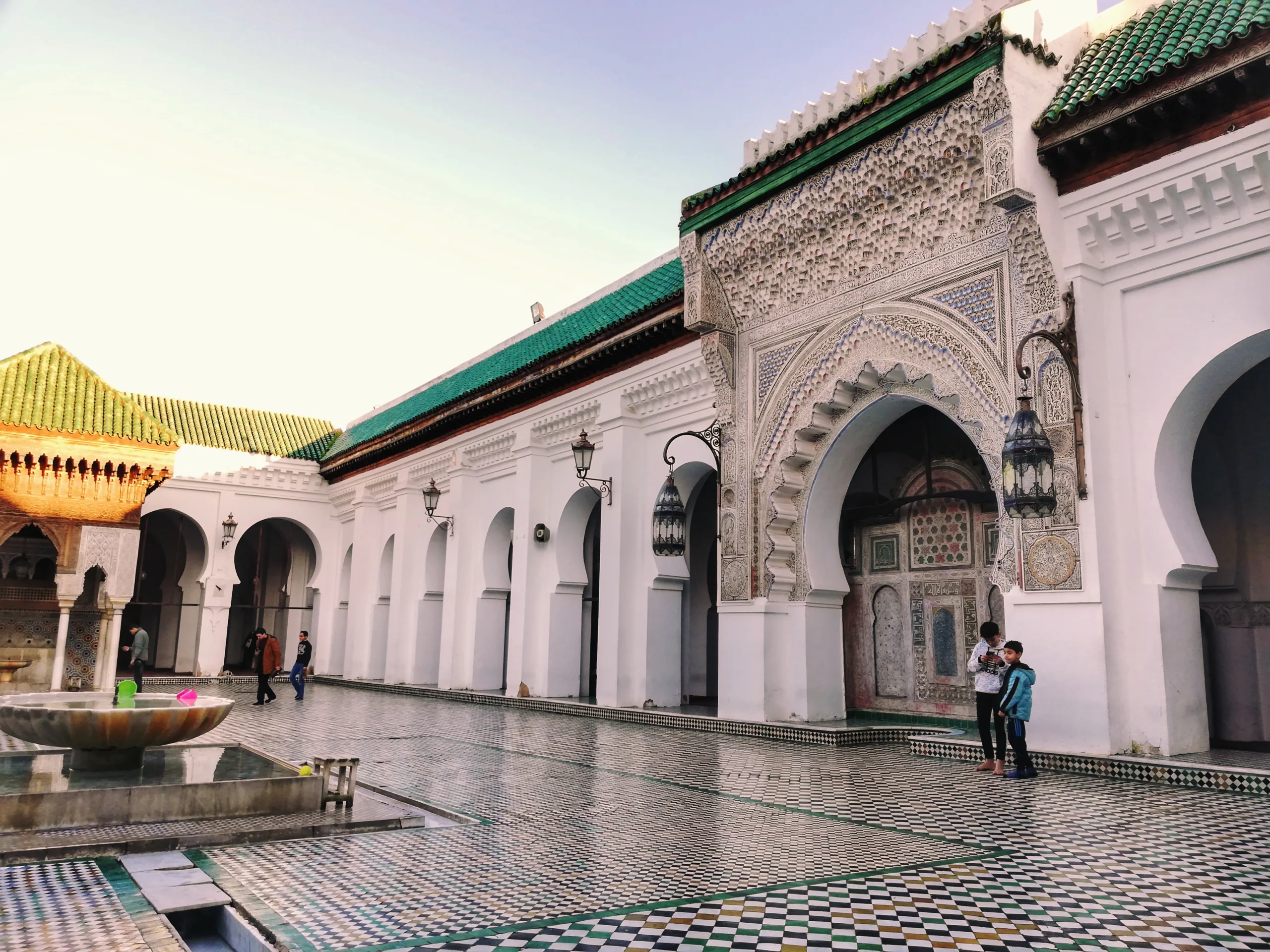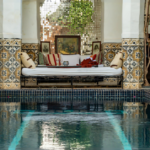Fes isn’t just a destination—it’s a sensory explosion. Imagine the call to prayer echoing over terracotta rooftops, the scent of saffron and cedarwood clinging to medieval alleyways, and the hum of artisans hammering copper under arched doorways. This ancient city rewards travelers who ditch the guidebooks and lean into its rhythms. Here’s how to experience Fes beyond the obvious, with hidden spots even seasoned explorers miss.
1. Wander Fes el Bali (Old City) Like a Local (Not a Tourist)
Start at Bab BouJeloud, the iconic Blue Gate, but resist the urge to follow the crowds. Instead, veer left into the quieter alleys near Place Seffarine, where coppersmiths have hammered trays and teapots for centuries. Pop into a hole-in-the-wall bakery for msemen (flaky pancakes) dipped in honey, then follow the scent of cedarwood to Dar Bartha, a carpet cooperative where women weave rugs using 9th-century techniques. Time your visit for late afternoon, when golden light spills through lattice windows.

2. Chouara Tannery Without the Crowds (or the Stench)
Most travelers visit the tanneries mid-morning, when tour groups clog the viewpoints. Go at 7 AM instead, when workers stamp freshly dyed hides into vats of natural pigments—indigo, poppy red, and mint green. Skip the pushy guides and head to Terrasse des Tanneurs in Souk Debbaghine, a rooftop café that hands out mint sprigs to mask the smell. Stay for a leather workshop where you can stitch a custom folio or bag. For deeper insights, MorocConnect.net offers a list of ethical tanneries that prioritize artisan welfare.

3. Al Attarine Madrasa: Fes’s Underrated Masterpiece
While Bou Inania Madrasa draws Instagram crowds, Al Attarine Madrasa near the spice market is a quieter gem. Built in the 14th century, its courtyard dazzles with honeycomb stucco, zellij mosaics, and Quranic calligraphy carved into cedarwood. Climb to the rooftop for a rare view over the medina’s sea of rooftops. Local tip: Visit during golden hour, when the light turns the plasterwork into a golden labyrinth.

4. Step into History at Kairaouine Mosque & University
Founded in 859 AD by Fatima al-Fihri, a visionary Tunisian refugee, Kairaouine Mosque isn’t just a religious landmark—it’s the world’s oldest continuously operating university and the spiritual heartbeat of Fes. Marvel at its iconic green-tiled roof, twin minarets adorned with geometric zellij mosaics, and sandstone arches carved with Quranic calligraphy in gold leaf. While non-Muslims can’t enter the prayer halls, you can:
- Peek into the courtyard from the arched gate near Nejjarine Square, where scholars still gather under ancient olive trees.
- Admire the turquoise-tiled fountain in front, reflecting the mosque’s grandeur at sunrise.
- Request access to the library (via guided tours), home to a 9th-century Quran written on gazelle parchment.
Local secret: Climb the rooftop of Al Attarine Madrasa for an unobstructed view of the mosque’s marble-columned courtyard and the hum of student debates below. Dress modestly and tread softly—this is where Morocco’s intellectual legacy began.

5. Unravel Stories in the Mellah (Jewish Quarter)
Fes’s Jewish Quarter, the Mellah, is a world of cobalt-blue doorways and whispered history. Visit the Aben Danan Synagogue, one of Morocco’s oldest, where sunlight filters through stained glass onto a Torah ark carved from cedar. Browse Eliyahu’s Antiques for silver hamsa necklaces and vintage Berber jewelry, then wander the cemetery at sunset. The white tombs glow against the fading light, and local storytellers often gather near the entrance to share tales of silk traders and 15th-century refugees.
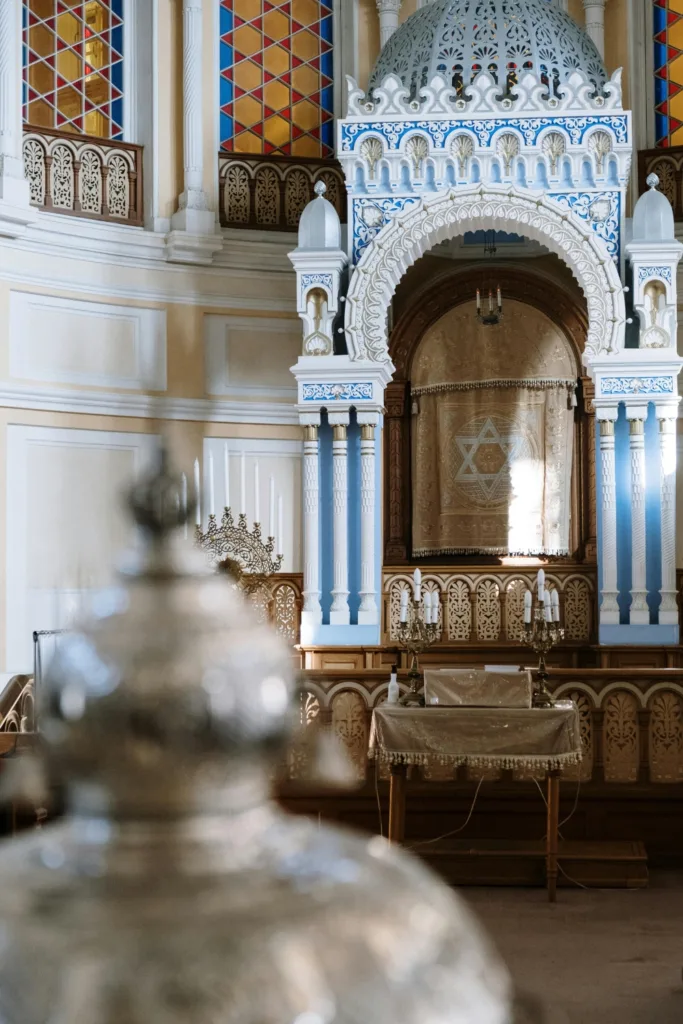
6. Throw Clay in a Centuries-Old Pottery Workshop
In Ain Nokbi, families have crafted Fes’s iconic cobalt-blue ceramics for generations. At Art d’Argile, master potter Mohamed guides visitors in shaping tagines on a kickwheel. His wife serves mint tea with orange-blossom cookies while your creation bakes in a wood-fired kiln. Want to take home more than souvenirs? MorocConnect.net lists workshops offering shipping for fragile items.
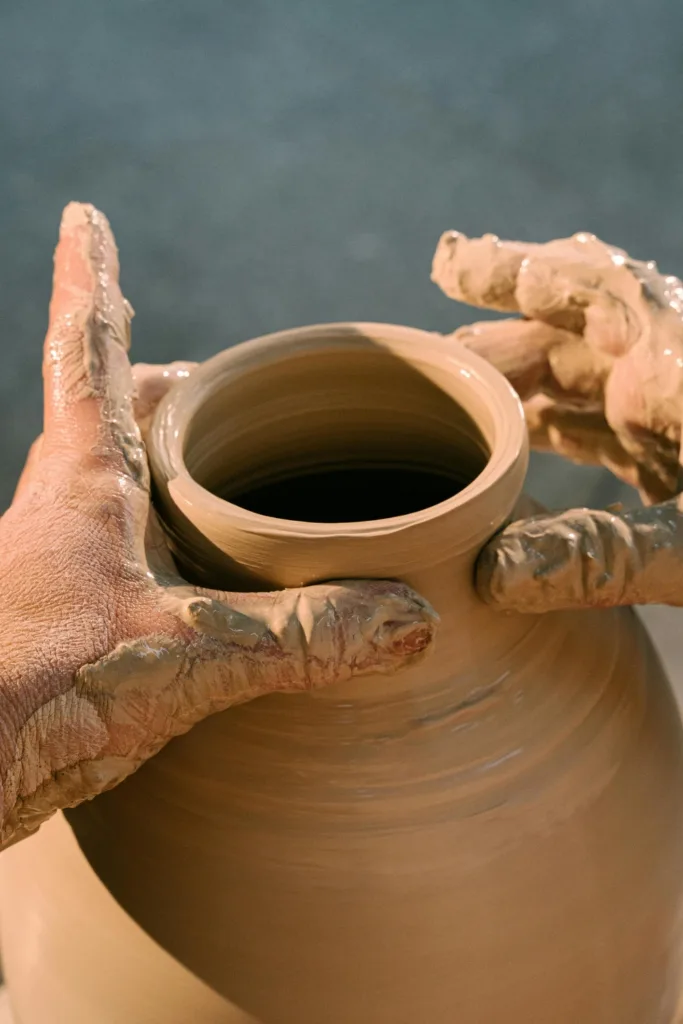
7. Gawk at the Golden Gates of the Royal Palace
Though the Royal Palace’s 80-acre gardens are off-limits, its seven bronze doors are a spectacle. Each symbolizes a Moroccan dynasty, with intricate patterns inspired by Andalusian mosaics and Berber motifs. Go at sunrise to avoid tour buses and chat with guards—they’ll hint at rumors of peacocks strutting in hidden courtyards. For photography buffs: The best light hits the doors around 8 AM.

8. Hike the Merenid Tombs for Sunset (Plus a Secret Cave)
The hilltop Merenid Tombs offer postcard views of Fes el Bali, but few travelers explore the hidden cave beneath the ruins. Local shepherds claim it was a medieval hideout for scholars fleeing persecution. Bring a flashlight (phone lights work) and climb down the rocky path to find graffiti left by 20th-century explorers. Pack a picnic of figs, almonds, and goat cheese from the medina, and watch the city’s minarets turn gold under twilight.

9. Day Trip to Volubilis & Meknes (Roman Ruins + Royal Stables)
Volubilis’s Roman mosaics are stunning, but pair them with Meknes—Fes’s quieter, regal cousin. Walk the Heri es-Souani stables, where vaulted ceilings once housed 12,000 royal horses, and visit the Mausoleum of Moulay Ismail. In Meknes’s medina, Café Maure overlooks the Agdal Reservoir—order maakouda (potato fritters) and mint tea on the terrace. MorocConnect.net recommends guided tours that include a stop at a nearby olive oil cooperative.
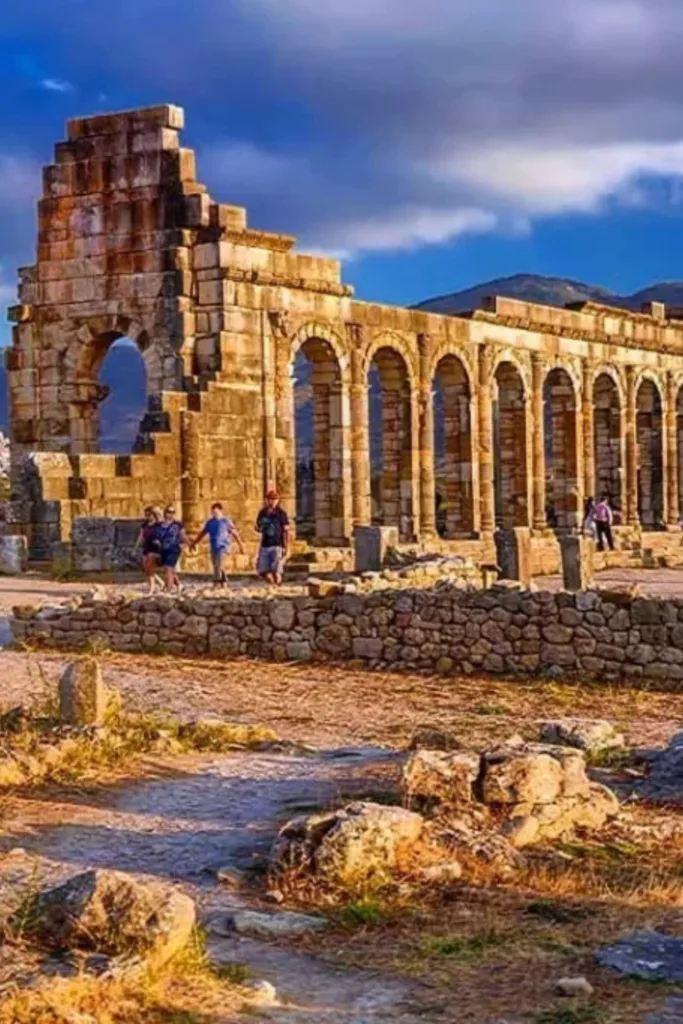
10. Dine in Secret: Royal Feasts in Hidden Riads
Skip the bustling night stalls and indulge in a clandestine culinary experience at Dar Roumana , a 19th-century riad in Fes el Bali. This restored mansion offers private dinners in candlelit courtyards adorned with citrus trees and zellij mosaics. The menu revives royal dishes like b’sstilla (cinnamon-dusted pigeon pie) and tagine jdida (lamb with quince), paired with almond milk or rosewater-infused cocktails. Reservations are mandatory, but non-guests can secure a spot via their website. For a budget-friendly alternative, Café Tazi in the Andalusian Quarter serves pastilla and mint tea under arches inscribed with 16th-century poetry. These hidden venues capture Fes’s gourmet legacy without the chaos of Place R’Cif.
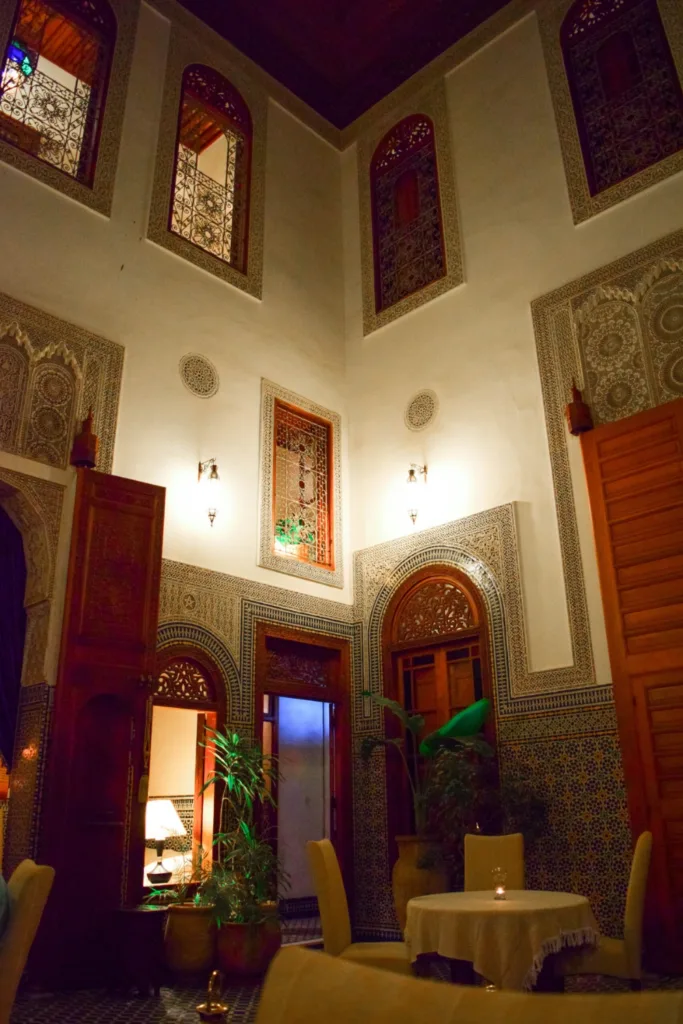
11. Sip Coffee in a Hidden Riad Garden
Tucked behind a nondescript door in Fes el Bali, Riad Idrissy’s garden is a sanctuary of orange trees and bubbling fountains. Order a café nouss nouss (half coffee, half milk) and lemon-almond cake, then browse the owner’s collection of vintage Moroccan travel posters. It’s also a guesthouse, but non-guests can lounge here for the price of a drink.

12. Hunt for Antiques in the Souk el Henna
Most shoppers flock to the dye and spice souks, but Souk el Henna specializes in antiques. Dig through piles of Berber carpets, brass lanterns, and Art Deco French-Moroccan furniture. Haggling is expected—start at 40% of the asking price. For rare finds, ask about “the back room” at shops like Dar El Ghalia, where traders stash Ottoman-era jewelry and 19th-century manuscripts.

13. Catch a Sufi Trance Ceremony
On Thursday nights, the Zaouia of Moulay Idriss II hosts Sufi chanting sessions. Men in white robes spin to the rhythm of drums and lutes, reaching a trance-like state believed to connect them to the divine. Arrive early to snag a spot along the walls, and dress modestly. Check MorocConnect.net for schedule changes during Ramadan.

14. Learn Calligraphy at a Traditional Scriptorium
Near the Qarawiyyin Library, the Bou Inania Scriptorium teaches visitors to write Arabic script with bamboo pens and walnut ink. Master calligrapher Ahmed charges 200 dirhams for a 2-hour session—you’ll leave with your name framed in ornate Maghrebi script. Fun fact: The ink’s recipe hasn’t changed since the 13th century.
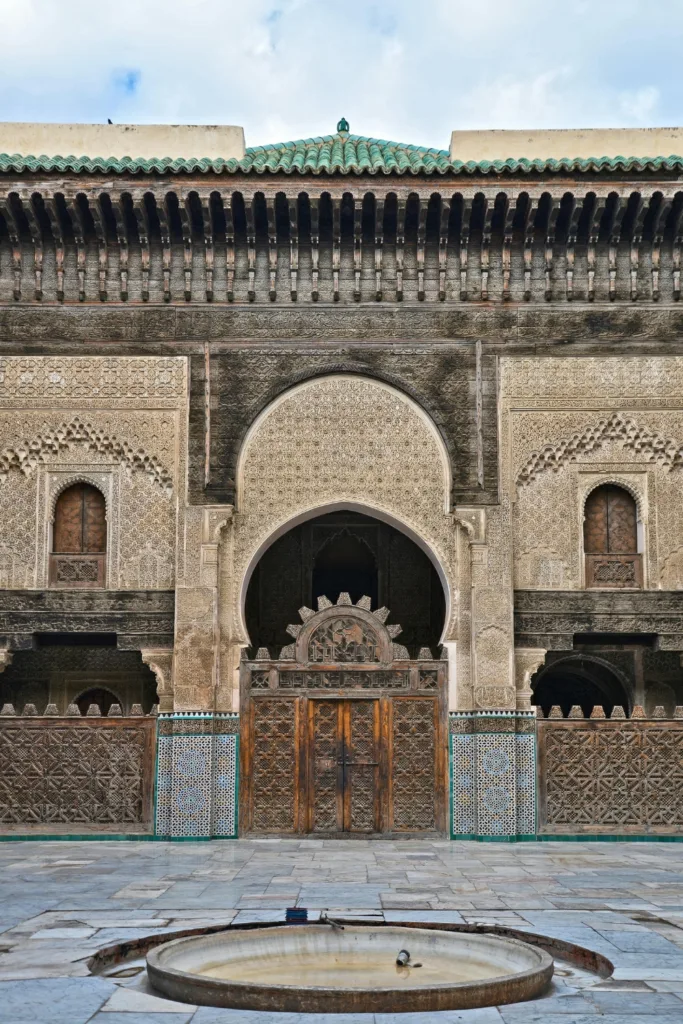
15. Explore the Forgotten Andalusian Quarter
Most maps ignore Fes’s Andalusian Quarter, settled by refugees from Cordoba in the 9th century. Its alleys are wider, quieter, and dotted with crumbling mansions featuring horseshoe arches and stucco floral motifs. Look for Dar Belghazi, a half-abandoned mansion where you can still see faded frescoes of Andalusian gardens. Local kids often offer “tours” for a few dirhams—they know the best rooftops for photos.
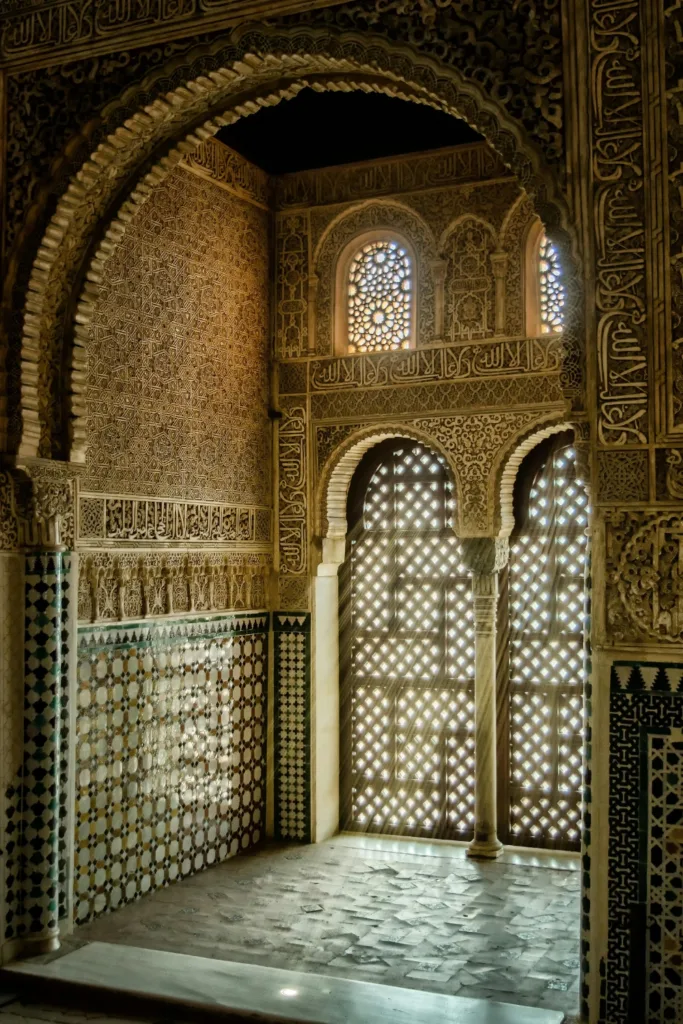
Fes Essentials
- Stay: Riad El Yacout (budget-friendly, rooftop views) or Palais Amani (luxury with a Hammam).
- Eat: Café Clock for camel burgers and live storytelling nights.
- Avoid: Donkey carts after 10 AM—alleys become gridlocked.
- Festival: June’s Fes Festival of World Sacred Music fills the city with Gnawa musicians and Sufi dancers.
Fes doesn’t just show you Morocco’s past—it pulls you into its heartbeat. Let the city’s chaos, craftsmanship, and cinnamon-laced air rewrite your idea of adventure. For more local tips, including transportation guides and cultural etiquette, visit MorocConnect.net—their Fes experts update the site weekly with hidden gems.

